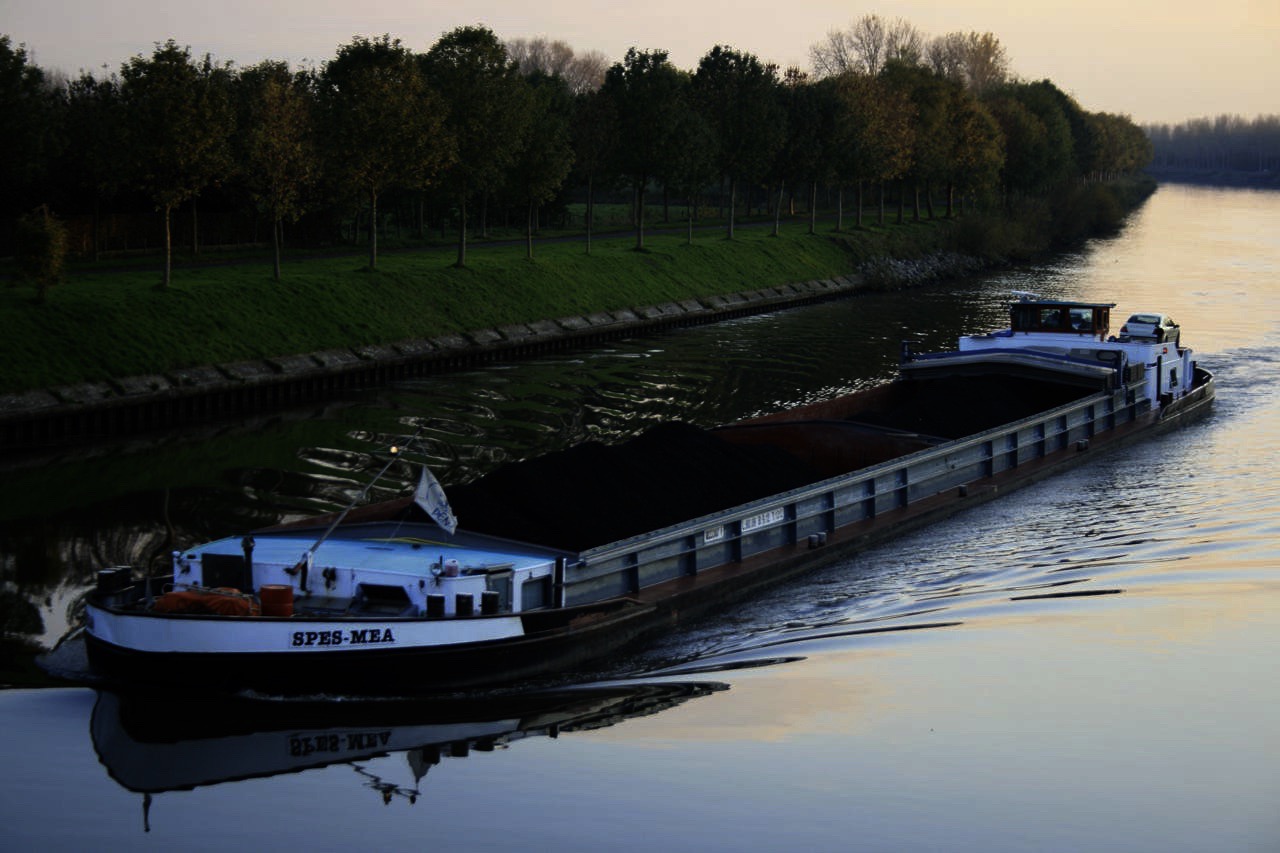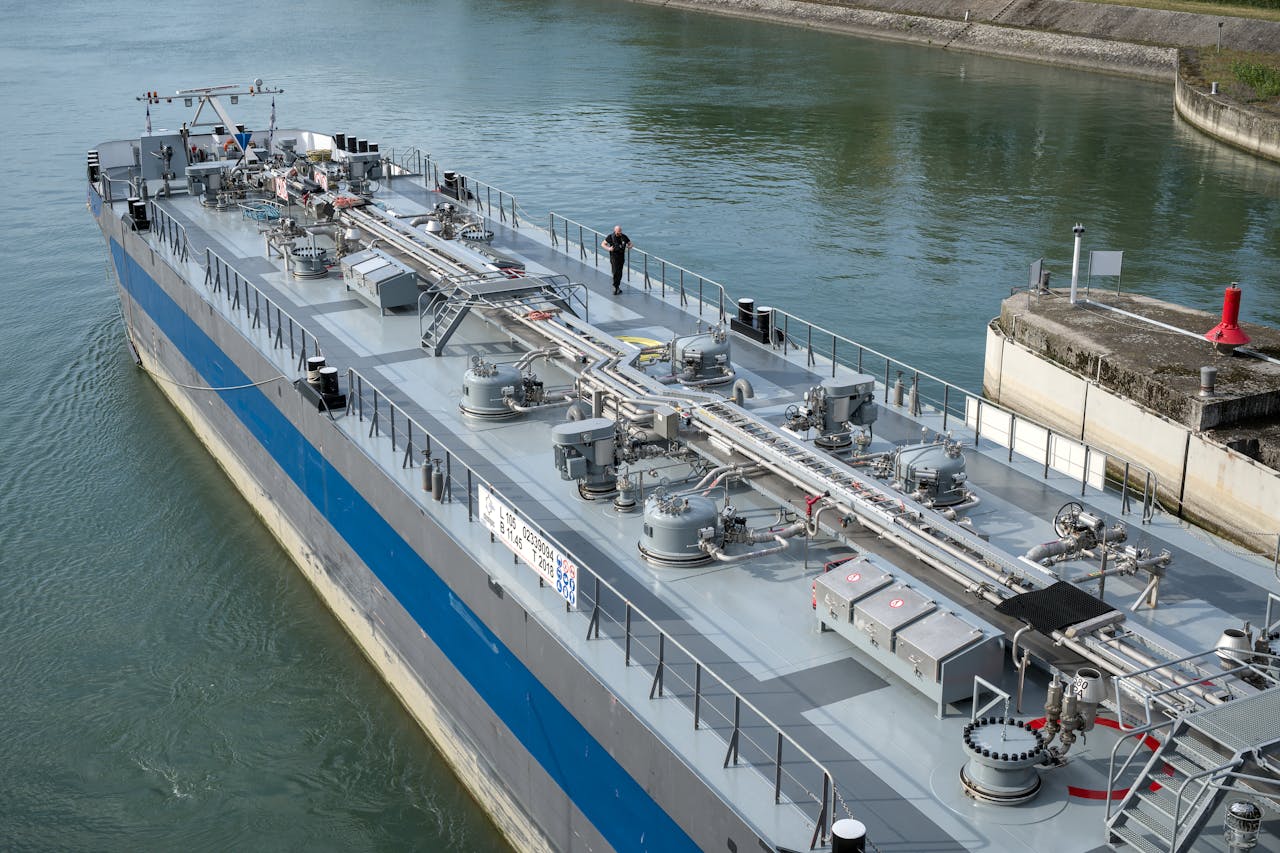Barge Ships in Freight Shipping
Posted On 19th June 2025Barge transportation is very important in today's logistics, which moves freight across waterways, including everything from ports to remote terminals.
Well, unlike the massive ocean liners, barge shipping vessels stand out in the shallow, winding rivers and canals of places like the United States and Europe. They often carry freight such as grain and steel with a smaller carbon footprint.
In this quick article, we will explain what is barge in shipping, what is a barge used for, explore its types, and the waterways it navigates. We’ll also cover why barge shipping remains a cost-effective option for moving large loads in 2026 logistics.
Let’s start with the most important – what is a shipping barge?

What is Barging Transportation
To explain this as concisely as possible, let’s start with the fact that barging transportation uses flat-bottomed large vessels, also called “barges”.
This is the main transportation method for waterways such as coastal routes, canals, and rivers, where a single barge ship can handle over 1,500 tons. Yes, they are designed to carry heavy loads, but to support them, they are often carried by tugboats.
When you do the math, it turns out that barge ships and their load capacity make them a much more cost-effective option compared to trucks and trains. Also, their ability to navigate tight and narrow waterways makes them extremely versatile.
Their versatility makes them the perfect option for carrying freight such as grain, steel, coal, and other bulky materials over regions such as the Gulf Intracoastal Waterway in the United States.
We now know the barging meaning in shipping. Let’s compare a barge vs a cargo ship and learn why people often prefer barges.
Why Barges?
To answer the question “why?”, we can immediately say that a single transport barge can load and carry the equivalent of 60 truckloads, reducing fuel use and emissions.
If we have to compare barge vs ship, recent studies show that barges move large cargo 514 miles per gallon per ton. A lot more efficient.
This makes barging shipping not only wallet-friendly but also environmentally friendly. This supports global trade by avoiding road congestion and delivering the freight quickly and efficiently without many delays.
Types of Barges
To understand freight barge transportation better, let’s go over the main types:
Dry Cargo Barges
The most well-known, and perhaps most common, barge transportation type is the dry cargo barges, like hopper barges, that typically move bulky materials. Well, they come with both open and covered designs to protect the freight from the weather, which not only ensures safety but also allows the transportation of sensitive goods.
Liquid Cargo Barges
The next type we’re going to review is liquid barges that transport freight like petrochemicals, oil, or fertilizers in sealed tanks. These barges are made to withstand leaks and ensure the ultimate safety for the freight, which is typically supplied to industrial ports.
Deck Barges
Next, we have the deck barges, which commonly carry the most oversized or project freight, like machinery or construction equipment. Deck barges are designed to fit freight with large and uneven dimensions. Their versatility suits unique loads, making them key in marine transportation for specialized freight.
Crane Barges
Last but not least are the crane barges, equipped with heavy-lifting gear, designed to support construction or salvage operations. They load and unload cargo or assist in building bridges, and make their way in tight waterways where precision is the most important factor.
What Are Barges Used For - Common Barging Cargo
As we’ve already clarified, barges are the big-gun transportation method in logistics, and they transport a wide variety of freight.
To get a good grasp of the common cargo they move, here’s the quick list:
- Dry Bulk Cargo: Barges or hopper barges often transport raw materials such as sand, gravel, coal, and grain, with large quantities for agriculture and construction.
- Liquid Cargo: The liquid freight is often moved by tank barge transport, which often carries petrochemicals and liquid fertilizers, moving it to refineries or storage facilities.
- Project Cargo: Barges typically handle a lot of oversized items, such as machinery and bridge components, that ride on deck barges built for unique, bulky loads.
- Steel and Metal: Barges can also carry the well-known steel coils, scrap metal, and other industrial materials, which are supplied to factories and ports.
- Containers: Barges also transport the standardized shipping containers, which are full of consumer freight, often stacked on top of the flat surface of deck barges.
- Construction Materials: Cement, lumber, and aggregates travel via barges to support infrastructure projects, especially in areas reachable only by water.
Barge Transportation - Types of Waterways Traveled by Barges
The barge transportation relies on a network of waterways, where navigation is impossible for larger or unfit barge vessels. These waterways include canals, rivers, and coastal routes, through which a lot of important freight is delivered every day.

They are crucial for barging shipping, so we’re going to take a closer look at some of the most popular waterways in the United States:
- Mississippi River: In first place, perhaps the most popular barge route is the Mississippi River, which is the foundation of barge shipping in America. It stretches for more than 2,300 miles, allowing efficient transportation for a variety of goods.
- Gulf Intracoastal Waterway: The Gulf Intracoastal Waterway, stretching for more than 1,300 miles, is one of the most popular coastal channels that support barge shipping between Texas and Florida.
- Ohio River: The Ohio River is about 981 miles long, flowing through industrial land, and it’s a key route for barges transporting raw materials.
- Illinois Waterway: The Illinois Waterway is another popular route for barge shipping, as it connects Chicago and the Mississippi. It stretches for about 336 miles, and it’s one of the most efficient routes for agricultural freight via cargo barges.
- Tennessee River: The Tennessee River, stretching for about 652 miles, fully supports barge services for bulk materials like gravel and industrial equipment.
- Erie Canal: The well-known Erie Canal, 363 miles long in New York, allows barge transportation of specialized freight, connecting the Great Lakes to the Atlantic.
Find Barge Transportation Companies on FreightRun
Now that we know exactly what barge is, maybe you’re looking for this type of transportation!
If you want to discover the most reliable barge companies, use FreightRun’s powerful quote calculator that will instantly provide you with the top freight shipping carriers. You only need to input your details, and we’ll instantly compare rates, show you reviews, and provide you with only the best quotes.
You can book your barge shipping today and get your cargo moving on America’s waterways!



